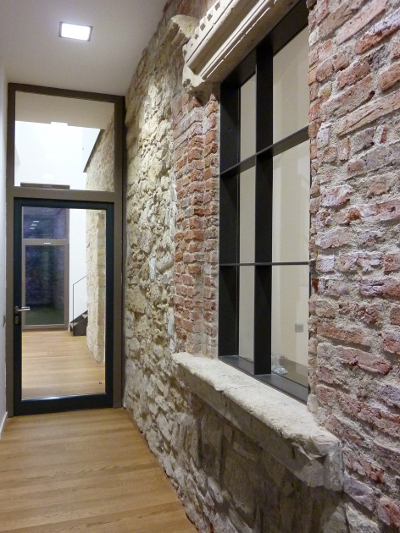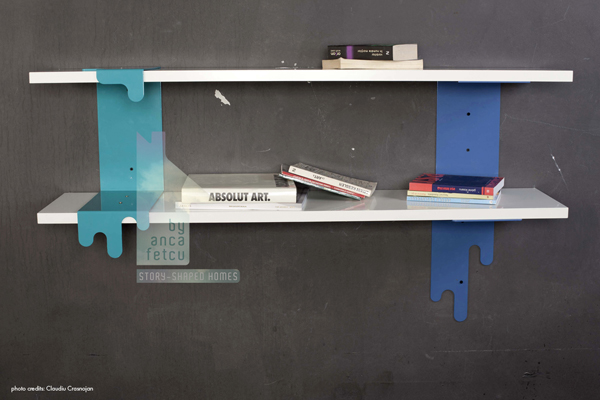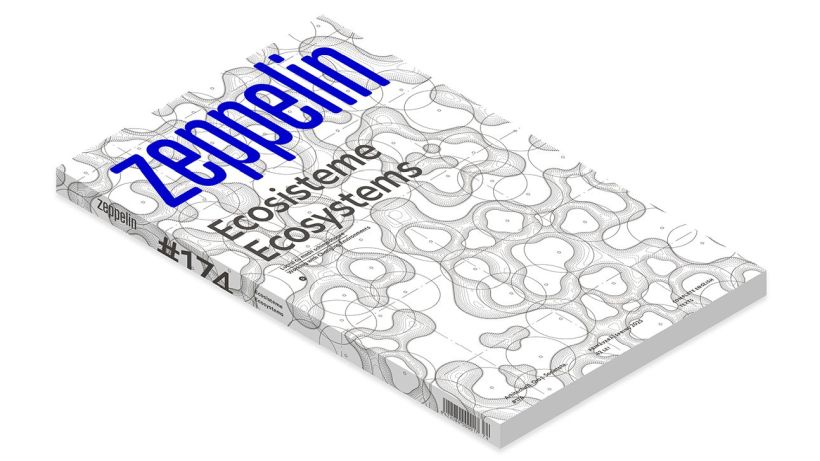“Godfatherly” capitalism vs. knowledge economy
We all know the whereabouts of the American researchers, the kind of studies in which they fit all sorts of things such as the brightness of your hair with sleep or intelligence with coffee addiction, but let me tell you a good one that might get to some climber, a smart and influential fellow at the top.
- Recommend on FacebookTweet about itPost de: Stefan Ghenciulescu
A house in the historical center has been restored and expanded serving as a complex blend of an architecture studio, a residence and some urban services.
So far, most of the works of Planwerk studio published in our magazine have pertained to city or public space planning. Their head office (designed, financed and shared with BAU office) does not only involve a work of architecture and restoration.
- Recommend on FacebookTweet about itPost de: Andreu Arriola & Carme Fiol
A fire station showing the authors’ interest in both a dialogue with the surrounding landscape and a need to provide a tailor-made space for a particularly functional program.
- Recommend on FacebookTweet about itPost de: Cosmin Caciuc
The rehabilitation of some spaces in the centre of a small Polish town increases the value of the place through reasonable investments, rigor and intelligent interweaving of old fragments and new interventions.
- Recommend on FacebookTweet about itPost de: Constantin Goagea
Something strange is looming today like a sort of dystopia: the city of private mentalities. A city that is run from a cell phone. The buildings of a better tomorrow pass our way like a rushing pell-mell while the freedom of reaction is less important than novelty which does not allow any time for reflection; novelty means a continuous activity, progress, the purely better part and victory.
- Recommend on FacebookTweet about itPost de: Constantin Goagea
The future is the place to cultivate optimist and bright plans, and for the cities, global efforts go to new sophisticated digital technologies and to interfaces supporting us to manage with those technologies.
- Recommend on FacebookTweet about itPost de: Constantin Goagea
Constantin Goagea: In 2008 you came back from UK. Certainly, to move mountains and I suppose you quickly banged your head against brick walls.
Anca Fetcu: A day after coming back… (laughing) …No, not at all…Well, they said it’ s not possible, not here, not now, it’s difficult and it won’t come out.- Recommend on FacebookTweet about itPost de: Manuel Ruisánchez, Francesc Bacardit, arhitecti
Light partions and the insertion of new organs shape the strategu for the recovery of the the Fabra & Coats Factorya as a centre for creative industries.
- Recommend on FacebookTweet about itPost de: Constantin GoageaWhen you get in your forties, you swear that the whole male world is moving in a more or less predictable way: you have stories to tell which make young women gaze in wonder, you can count some important work experiences, fulfilled personal projects or at least clear ones, a secure job, a company, children, wife, one mistress or more, each depending on the case, lots of travels, cars, motorcycles, an apartment, a better house.
- Recommend on FacebookTweet about itPost de: Constantin Goagea
We were all rich and cool, the world was a crack bar known by everybody from a magazine, where everyone looked full of admiration how we got in our expensive cars, then, yes, I would invite everybody at home, as I was rich and everyone would envy me, as I used to press the remote control and a pool on the ceiling would come up,
- Recommend on FacebookThis website uses cookies to improve your experience. We'll assume you're ok with this, but you can opt-out if you wish.Accept Read MorePrivacy & Cookies Policy
Privacy Overview
This website uses cookies to improve your experience while you navigate through the website. Out of these, the cookies that are categorized as necessary are stored on your browser as they are essential for the working of basic functionalities of the website. We also use third-party cookies that help us analyze and understand how you use this website. These cookies will be stored in your browser only with your consent. You also have the option to opt-out of these cookies. But opting out of some of these cookies may affect your browsing experience.Necessary cookies are absolutely essential for the website to function properly. This category only includes cookies that ensures basic functionalities and security features of the website. These cookies do not store any personal information.Any cookies that may not be particularly necessary for the website to function and is used specifically to collect user personal data via analytics, ads, other embedded contents are termed as non-necessary cookies. It is mandatory to procure user consent prior to running these cookies on your website.



.jpg)

.jpg)
